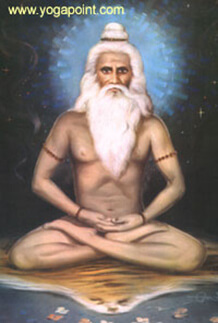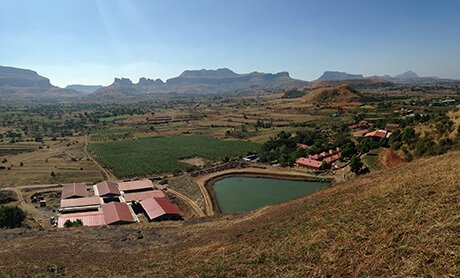
A founder of Ashtanga yoga tradition Sage Patanjali in 500 BC wrote a text containing 196 Sutras in Sanskrit which is known as Yoga Sutras. One sutra forms one statement. But the statements are in Sanskrit. Sutras are very compressed as far as meaning is concerned. So to explain and understand these Sutras, it takes lot of efforts and knowledge of Sanskrit but also understanding of the philosophy of yoga.
Yoga Sutras are divided in to four chapters.
First chapter of SAMADHI PADA starts with first sutra -
Atha Yoga anushasanam ( I – 1 )
Atha means Now
anushasanam means discipline.
So the meaning is “Now is the discipline of yoga”.
Second sutra is definition of Yoga.
Yogaha chitta vritti nirodhah ( I – 2 )
chitta means mind,
vritti means modifications of mind
nirodhah means to control
Yoga is to control the modifications of mind or functioning of the mind.
Third Sutra is about ultimate achievement of Yoga.
Tada drashtuh swarupe awasthanam( I – 3 )
Tada means - after that
drashtuh means – the seer
swarupe means – state of self or soul
awasthanam means - resides
After that (Control of functioning of mind) the seer establishes himself in to true state of being.
In first chapter Patanjali explains five types of vritties (types of modifications of mind)
Also Patanjali talks about seven paths to achieve the goal of control of mind. One of these is Omkar chanting.
In the first chapter Patanjali also explains the different types of Samadhi (ultimate state of achievement in yoga).
Sabija Samadhi & Nirbija Samadhi
Sabija is further subdivided in two
Sampradnayat & Asampradnayat
Sampradnayat is further subdivided in four types
Savitarka, Savichara, Sananda, Sasmita
Nirbija Samadhi is the ultimate state of achievement in Yoga.
In the second chapter, Patanjali explains the tools and techniques to achieve the ultimate goal of Yoga. All eight parts of Ashtanga yoga are explained by Patanjali in this chapter. Yama – Social Discipline, Niyama – Self Discipline, Asana – Yoga poses, Pranayama – Breath control, Pratyahara – sense withdrawal, Dharana – concentration, Dhyana – meditation and Samadhi – self-realization are 8 steps to yoga. But in this chapter the focus is on first 5 steps.
Remaining 3 steps of Dharana – concentration, Dhyana – meditation and Samadhi – self-realization are discussed in details byt Patanjali. All three together is called Samyam. Samyam on different objects leads to different achievements which are called Siddhies (perfections).
Janmaushadhimantratapaha samadhijah sidhayaha (IV – 1 )
Ways to achieve ultimate state of Samadhi
Hari Om !
- Guruji
| COURSE | Venue |
Phone - +91-9822770727
E-mail - yoga@yogapoint.com or yogapoint108@gmail.com

Yoga Vidya Dham, Kaivalya Nagari,
College Road, Nashik - 422005.
Maharashtra, India.
Phone - +91-9822770727 (for courses in ENGLISH)
+91-253-2318090 (For courses, in HINDI or MARATHI)
(Please call during 9.00 AM to 5 PM Indian Time)
E-mail - yoga@yogapoint.co or yogapoint108@gmail.com
Village Talwade, Trimbak, Nasik
Maharashtra,India.
Phone - +91-9822770727
E-mail - yoga@yogapoint.com or yogapoint108@gmail.com
